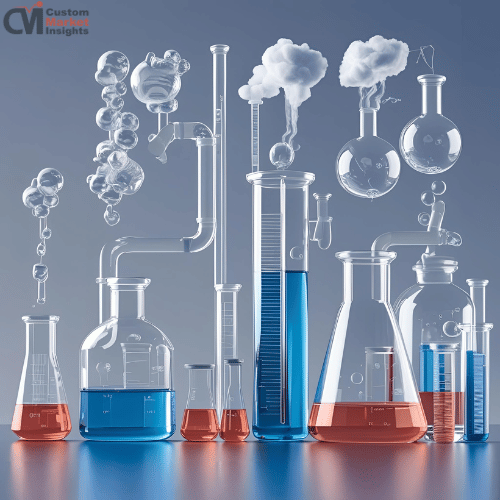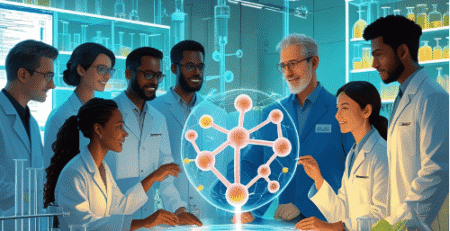Introduction: Why the Chemical Sector Still Matters
The worldwide chemical industry is a key part of our lives. It powers farming, makes high-tech materials for electronics, clean energy, and healthcare, and much more. This sector is huge, with a market size of more than $5 trillion in 2025. It’s also going through a huge change. Chemical firms are changing quickly to be relevant and make money because of climate goals, digital disruption, and changing customer needs.
In this blog, we look at how the chemical industry is changing, point out the most important trends, and talk about the problems and chances that people in the industry need to deal with in order to stay ahead.
Sustainability at the Core of Strategy
Environmental sustainability is no longer just a nice-to-have CSR project; it’s become a key part of business strategy. Companies have had to rethink their usual ways of making things because of rules like the EU Green Deal and higher taxes on carbon emissions. Because of this, big companies are putting a lot of money into renewable feedstocks, green chemistry, and circular economy models.
Also, customers are asking for more eco-friendly and clear products, which is making companies put sustainability first in how they create products, run their supply chains, and even package them. New technologies, such as bio-based polymers and carbon capture, are making it possible for responsible production to happen all throughout the value chain.
Digitalization and Industry 4.0 Transforming Operations
Chemical firms are changing the way they do business because they are using more digital tools. Advanced analytics, AI, and digital twins are all helping to make production more efficient, cut down on downtime, and make sure that all rules are followed. For example, predictive maintenance technologies are making it possible to manage assets proactively, which cuts operational expenses by a large amount.
Real-time monitoring technologies are also making it easier for companies to see what’s going on in global supply chains, which is important in the post-pandemic environment so that they can quickly respond to problems. Chemical businesses are not only making their work more efficient by using digital technology, but they are also speeding up the time it takes to get products to market and making the consumer experience better.
Strategic Shifts in Global Trade and Supply Chains
Significant alterations in supply chains are being driven by geopolitical conflicts as well as global economic realignments of many kinds. A significant number of businesses are reevaluating their approaches to sourcing, adopting the concept of nearshoring, and constructing production hubs that are more resilient and localized. Specifically, this trend is particularly noticeable in important subsectors such as petrochemicals and specialty chemicals, where delays and dependencies can have a significant influence on industries that are further downstream.
Asia is witnessing the emergence of countries such as India, China, and Vietnam as powerhouses in the chemical manufacturing industry. These countries are reaping the benefits of cheaper costs and government incentives. While this is going on, economies in the West are making investments in their local manufacturing capacities to lessen their dependency on imports and establish greater strategic autonomy.
Rise of Specialty and Performance Chemicals
This section of the specialty chemicals market is experiencing tremendous growth as a result of the increased demand for goods that are tailored, high-performing, and environmentally friendly. Among these are chemicals that are used in personal care products, food additives, electronic materials, and water treatment, all of which are businesses that are experiencing continual innovation.
In contrast to bulk or commodity chemicals, specialized chemicals have better profit margins and are less vulnerable to fluctuations in price. By the year 2025, this particular category is likely to be regarded as a significant growth driver for the industry. Research and development, customer collaboration, and meeting the demands of niche markets are giving businesses an advantage over their competitors.
Key Growth Drivers and Challenges in 2025
To better understand the evolving landscape, here’s a snapshot of the key drivers and challenges impacting the chemical sector in 2025:
| Growth Drivers | Key Challenges |
| Green chemistry and sustainable innovation | Volatility in raw material prices |
| Increased demand for specialty chemicals | Regulatory complexity and compliance costs |
| Digital transformation and automation | Supply chain disruptions and global dependencies |
| Emerging markets are driving production and demand | Workforce reskilling and digital talent shortages |
| Strategic M&A and portfolio diversification | ESG scrutiny and stakeholder pressure |
In order to be well-positioned for long-term success, businesses that are able to successfully handle these dual forces—leveraging drives while controlling risks, will be in a strong position.
Investment and Innovation Outlook
The rate of investment in research and development is increasing, notably in fields such as enhanced coatings, biodegradable materials, hydrogen economy, and battery materials for electric vehicles, for example. There is a growing interest among venture capitalists and private equity investors in green chemistry startups and scale-ups. These companies are bringing innovative and environmentally friendly alternatives to conventional chemical processes.
When it comes to innovation, there is a growing trend of collaborations between academic institutions, businesses, and technology companies. Through the use of open innovation models, businesses are able to accelerate their development cycles while simultaneously gaining access to new expertise from various fields.
The Future of Work in the Chemical Industry
The workforce is undergoing a shift as well, as processes are being reshaped by automation and artificial intelligence. Upskilling and reskilling programs are becoming increasingly important in order to adequately equip personnel for the use of digital tools, compliance with sustainability standards, and decision-making that is driven by data. At the same time that businesses are beginning to appreciate the importance of many perspectives in the process of innovation, diversity and inclusion are also gaining significance.
Increasingly agile and purpose-driven workforces are the result of a larger shift toward hybrid working methods, greater workplace safety regulations, and stronger employee engagement programs. These are all components of the larger transition.
Final Thoughts: Embracing a Future-Ready Vision
When the year 2025 rolls around, the chemical industry is at a crucial crossroads. Companies that continue to use antiquated business strategies run the danger of slipping farther and farther behind their competitors. Future leaders will be those who embrace sustainability not only as a goal but also as a growth lever, invest in technology and human capital, and adapt to changing global realities with agility. These are the defining characteristics of the leaders of the future.
As the world continues to become more complicated, there will be an ever-increasing demand for creative chemical solutions. Whether it is addressing the issue of climate change, facilitating the development of intelligent materials, or providing support for breakthroughs in healthcare, the future of this industry is not only bright; it is essential.
Connect with our Experts


